Evolutionary Ecology
The department of Evolutionary Ecology gathers complementary skills in behavioural ecology, population dynamics, population biology, community ecology, and methodology (statistics and modelling). The research done in the department aims at studying how animal species evolve in a changing world by understanding the causes of the evolution of traits, adaptations and interactions. For that, we consider different levels of organization from individuals to populations and communities. Because organisms cannot be considered isolated from other biotic factors, we consider pathogens but also competing species within communities.
We study how individuals adapt to their environments that are largely impacted by anthropic pressures, and how life history traits and behaviour evolve in response to these pressures. Although we mainly focus on phenotype, we more and more consider the mechanistic link between the genotype and the phenotype. We develop the theoretical framework of our discipline through a conceptual and modeling approach. In parallel, we test hypotheses that arise from theoretical predictions through experimental, comparative and observational approaches on different biological models (insects, birds, mammals). Experimental approaches are developed in the laboratory (insect model) and in natura (bird, insect and mammal models). Observational and comparative research is mainly concerned with vertebrates. Our approaches are also, and increasingly, interested in the mechanisms of adaptive responses. In addition to the classical approaches of demographic analysis and trait change, methods of ecophysiology, chemical ecology and molecular biology are used.
Our department hosts several long-term studies of wild populations of different species. These long-term studies offer a valuable way to understand how biotic and abiotic factors affect individuals’ life history traits, and the functioning of populations in natura. Five populations of mammalian species are thus monitored for several years (more than 40 years on roe deer, 30 on Alpine marmots, 25 years on cats, 16 years on zebras, and 20 years on impala). Two of our study sites (La Sassière in Vanoise National Park (Alpine marmots) and Hwange National Park) have been certified as “Site d’Etude en Ecologie Globale” (SEEG), and two (ZA “Hwange” and ZA “Antarctic and sub-Antarctic”) were certified as “Zone Atelier” by the CNRS.
The department of Evolutionary ecology is also largely involved in training activities. Lastly, we also have strong socio-economic relationships. Indeed, because we address questions of major societal interest (global warming, public health) we tightly collaborate with socio-economic partners (Office Français de la Biodiversité, Vanoise National Park, Hwange National Park in Zimbabwe, Office National des Forêts, etc.) and participate to general public and media events.
Publications
Display of 571 to 600 publications on 2455 in total
Generalist plants are more competitive and more functionally similar to each other than specialist plants: insights from network analyses
Journal of Biogeography . 47 ( 9 ) : 1922-1933
DOI: 10.1111/jbi.13848
Journal article
see the publicationAuthor Correction: Complex ecological interactions of Staphylococcus aureus in tampons during menstruation
Scientific Reports . 10 ( 1 ) : 1848
Journal article
see the publicationSpatial variance-mass allometry of population density in felids from camera-trapping studies worldwide
Scientific Reports . 10 ( 1 ) : 14814
Journal article
see the publicationAssessing metacommunity processes through signatures in spatiotemporal turnover of community composition
Ecology Letters . 23 ( 9 ) : 1330-1339
DOI: 10.1111/ele.13523
Journal article
see the publicationEcological Specialization and Rarity of Arable Weeds: Insights from a Comprehensible Survey in France
Plants . 9 ( 7 ) : 824
Journal article
see the publicationWeeds: Against the Rules?
Trends in Plant Science . 25 ( 11 ) : 1107-1116
Journal article
see the publicationBias in presence-only niche models related to sampling effort and species niches: Lessons for background point selection
PLoS ONE . 15 ( 5 ) : e0232078
Journal article
see the publicationIs prediction of species richness from stacked species distribution models biased by habitat saturation?
Ecological Indicators . 111 : 105970
Journal article
see the publicationGrowth trajectories, better than organ-level functional traits, reveal intraspecific response to environmental variation
Peer Community In Ecology . : 100041
Other publication
see the publicationWhich traits make weeds more successful in maize crops? Insights from a three-decade monitoring in France
Plants . 9 ( 1 ) : 40
Journal article
see the publicationTRY plant trait database – enhanced coverage and open access
Global Change Biology . 26 ( 1 ) : 119-188
DOI: 10.1111/gcb.14904
Journal article
see the publicationAnalyzing snapshot diversity patterns with the Neutral Theory can show functional groups’ effects on community assembly
Ecology . 101 ( 4 ) : e02977
DOI: 10.1002/ecy.2977
Journal article
see the publicationExtinction–immigration dynamics lag behind environmental filtering in shaping the composition of tropical dry forests within a changing landscape
Ecography . 43 ( 6 ) : 869-881
DOI: 10.1111/ecog.04870
Journal article
see the publicationHow citizen scientists contribute to monitor protected areas thanks to automatic plant identification tools
Ecological Solutions and Evidence . 1 ( 2 )
Journal article
see the publicationNote technique sur la reprise progressive des activités de médecine préventive à la levée du confinement le 11 mai – Gestion des protocoles vaccinaux
Revue Vétérinaire Clinique . 55 ( 3 ) : 73-93
Journal article
see the publicationEvidence for wild cervids as transmission vectors of small ruminant drug resistant gastrointestinal nematode parasites
American Association of Veterinary Parasitologists, 65th Annual Meeting .
Conference paper
see the publicationResource manipulation through experimental defoliation has legacy effects on allocation to reproductive and vegetative organs in Quercus ilex
Annals of Botany . 126 ( 7 ) : 1165-1179
DOI: 10.1093/aob/mcaa137
Journal article
see the publicationCaprine nodular thelitis due to Mycobacterium uberis: A series of 26 cases in 11 dairy goat farms in Western France
Preventive Veterinary Medicine . 181 : 105060
Journal article
see the publicationAssessment of the impact of forestry and leisure activities on wild boar spatial disturbance with a potential application to ASF risk of spread
Transboundary and emerging diseases . 67 ( 3 ) : 1164-1176
DOI: 10.1111/tbed.13447
Journal article
see the publicationHeterogeneity of water physico-chemical characteristics in artificially pumped waterholes: do African herbivores drink at the same locations and does it lead to interference competition?
Journal of Arid Environments . 173 : 104014
Journal article
see the publicationGenomic Analysis of European Drosophila melanogaster Populations Reveals Longitudinal Structure, Continent-Wide Selection, and Previously Unknown DNA Viruses
Molecular Biology and Evolution . 37 ( 9 ) : 2661-2678
Journal article
see the publicationTrait-based ecological and eco-evolutionary theory
Theoretical Ecology . : 161-194
Book chapter
see the publicationPaleogeographic differences in temperature, water depth and conodont biofacies during the Late Devonian
Palaeogeography, Palaeoclimatology, Palaeoecology . 549 : 108852
Journal article
see the publicationA Speed-up Method for Numerical Simulations of Multi-strokes Cold Metallic Sheet Forming Processes
Procedia Manufacturing . 47 : 570 - 577
Journal article
see the publicationEditorial: Risk-Based Evidence for Animal Health Policy
Frontiers in Veterinary Science . 7
Journal article
see the publicationPost‐outbreak African horse sickness surveillance: A scenario tree evaluation in South Africa’s controlled area
Transboundary and emerging diseases . : tbed.13566
DOI: 10.1111/tbed.13566
Journal article
see the publicationUptake of Diagnostic Tests by Livestock Farmers: A Stochastic Game Theory Approach
Frontiers in Veterinary Science . 7
Journal article
see the publicationMultilayer network analysis unravels haulage vehicles as a hidden threat to the British swine industry
Transboundary and emerging diseases . 67 ( 3 ) : 1231-1246
DOI: 10.1111/tbed.13459
Journal article
see the publicationSons accelerate maternal aging in a wild mammal
Proceedings of the National Academy of Sciences of the United States of America . 117 ( 9 ) : 4850-4857
Journal article
see the publication
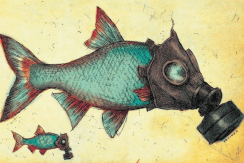
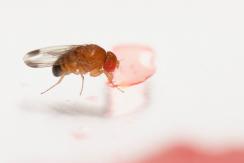
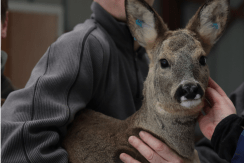
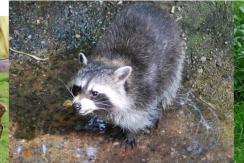
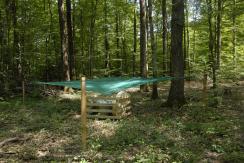
You also, comment on this article